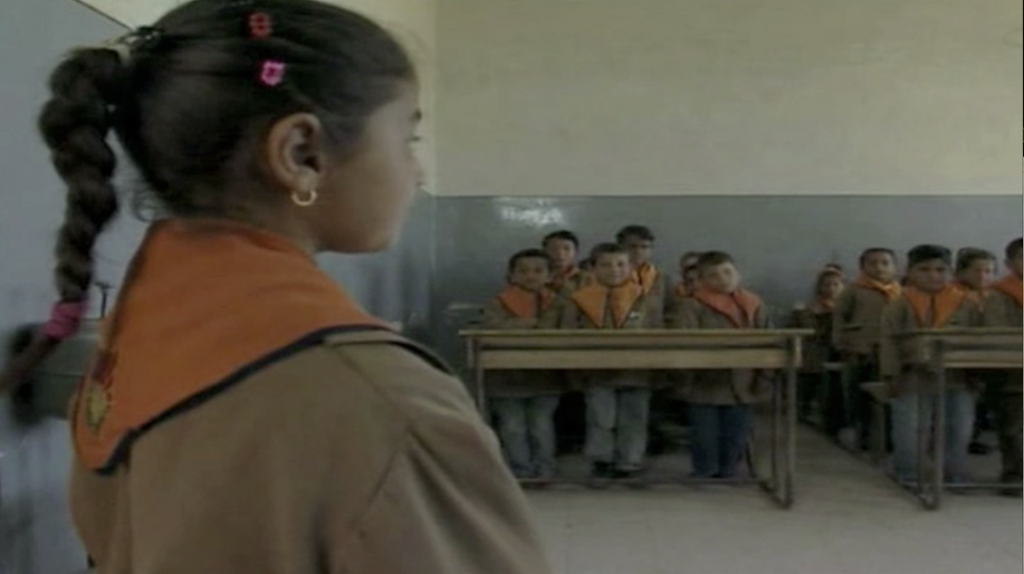Will Syria finally allow its students to think?


A close look at the education reform in Syria
Part II: Analysis
By Mohammad Mustafa Al-Saleh
The traditional framework of education in Syria has centred on a teacher giving lessons for an entire class session while his students silently listen.
But Syria is now trying to shake off this static form of teaching, where textbooks are the only reference for both student and teacher and where the learning process focuses on pupils merely regurgitating information learnt by heart.
The Syrian ministry of education recently gave training sessions on new methods of teaching to tens of thousands of teachers across the country, with the aim of improving and modernising the whole educational sector.
The main pillars of the reform aim to push students to develop their analytical skills, using them to look outside the usual textbooks for answers to questions and problems raised in class.
Students are trained to be inquisitive and explore the internet, library books and encyclopaedias for additional information. He or she is also encouraged to give his opinion and participate in discussions in class and at home.
The old school system killed the curiosity of the students
In the traditional system, a student is expected to know everything in the textbook but not encouraged to use his knowledge to analyse different situations. The danger is that the old system kills the curiosity students might have to acquire new knowledge and skills.
The educational reform, on the other hand, aspires to prepare students for the job market. Practical knowledge is thus valued over the theoretical.
In harmony with the new system, the teacher is not a dispenser of information but rather the director of a process of learning. He or she is only now required to speak for around a fifth of class time. The rest of the time is shared by students who are expected to raise questions, discuss and look analytically for answers.
While these new educational concepts seem very progressive and laudatory, a number of factors should be taken into consideration in order for these ideals to reap successful and tangible results.
The first obstacle to the reforms lies in the way classrooms are organised. Syrian public school classes are typically overcrowded, with up to 55 pupils per class in some city centres. Each desk accommodates three students and there is barely space for the teacher to circulate in class or for students to move around. The classroom is austere with nothing that allows for interactive learning.
Quality learning requires smaller classes
For the new system to be effective, classroom sizes should be reduced. Students should be encouraged to sit in circles and form groups from time to time. Classrooms should be equipped with a computer that allows the teacher to share information in an attractive way.
Secondly, it will be a challenging task to transform teachers who have been using traditional methods for years if not decades. The new system requires flexible instructors who are constantly updating their knowledge and adapting to new technologies.
Thirdly, the reform should take into account that Syrian students come from different cultural, economical and social backgrounds. Since part of the learning process is intended to happen outside the classroom, this would deepen the rift between students who come from middle and upper class families, and underprivileged ones. Students from poor and rural backgrounds would not necessarily have access to books and online resources as easily as their more affluent peers.
Students do not only learn at school
The student’s home environment would also play a larger role. So households where stimulating discussions happen between parents and children will present a more fertile ground for learning.
In addition, the new textbooks are more expensive and this could discourage poor families from sending their children to school, especially in the countryside and marginal neighbourhoods where the drop-out rate is already high.
But the main stumbling block that could impair the success of the new educational philosophy lies in the nature of Syria’s current political context. A system that encourages analysis and questioning on the part of the student is also one that induces them to challenge the status quo and deal with contradictory views.
Are society, teachers and the government ready for this new breed of students? Let’s consider, for instance, that a high-school student is tasked with writing a paper on a recent historical incident in Syria. During his research on the internet or in books, he would most probably find alternative representations of the official version of the incident. Will society then be ready for the student to give a critical opinion different from that of the textbook or the political authority?
In short, for the educational reform to thrive, the government needs to allow a margin of democracy for students to develop free and independent ways of thinking, for teachers to adopt an interactive teaching style and for society to embrace the change.
